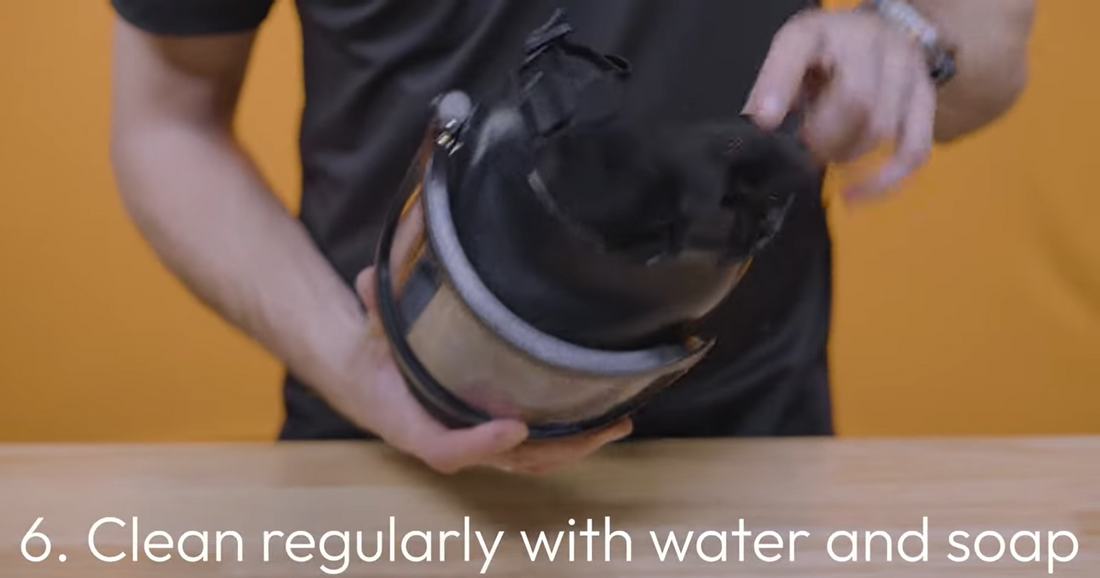Like any essential piece of life-saving gear–whether carried in the personal kit of a first responder or if owned by citizens wanting to be prepared for those “just in case” moments–gas masks require regularly scheduled care and maintenance to remain effective and safe. Gas masks are simple to care for.
Before storing a gas mask (for reference, please check out our article on gas mask storage), these simple maintenance steps should take no more than a few minutes a day and ensure that your gear is ready for the day when it's needed.
Gas Mask Maintenance and Care is Easier Than You Think – Key Items to Inspect
Gas Mask maintenance is simple, requiring very little time and work. The key to extending the operational life of a gas mask is safe storage and regular cleaning.
Create a checklist of items to inspect and routine maintenance steps to take. Start with the lenses. Gas mask lenses are made to last. But they can scratch and even crack, especially if worn for long durations in the field or have taken a beating during a tactical exercise. Sand is the natural enemy of the gas mask lenses, as many American servicemen found out during seemingly endless deployments to the Middle East and Southeast Asia (Iraq, Syria, Afghanistan, and points beyond).
Negligence and incorrect handling can result in the lenses falling out of the facepiece frame.
Next, inspect the mask’s interior for any signs of dirt, sand, oil, or damage. Look for any holes, cracks, or rips that might have developed. This is the worst-case scenario and will require the purchase of a new gas mask.
Some masks can develop a white or rust-colored wax-like film on the facepiece. There’s no reason to panic–this is merely residue from the preservatives in the rubber, and it won’t affect your mask in any way (or any bad way, at least).
After inspecting the lenses and the facepiece inside and out, it’s time to clean the gas mask.
Clean Regularly with Water and Soap
Cleaning your gas mask is the most important part of the maintenance regimen. There’s no precise formula to the process other than it should be cleaned. The mask can be cleaned with warm soapy water and a soft cloth. Water cannot harm the gas mask!
Warning: do not use an alcohol-based disinfectant on your mask. Alcohol will dry out rubber (it has the same effect on human skin!), and make it likelier to crack.
Remove the filter (if screwed on) and the speech diaphragm before scrubbing. Gas mask filters must not be cleaned. Water will destroy them and render them ineffective and useless.

To clean the mask, wipe it with a wet soapy cloth. Hard-to-reach areas–such as the connecting part of the mask and the lenses–can be cleaned using an old toothbrush or a toothpick to get the dirt out of tight areas (a practice that soldiers have used for over a century). We recommend that you stick to the toothbrush, as it is possible to pierce the mask with a toothpick.
Once everything is clean, rinse the cloth in clear water and wipe all the washed parts with a dry cloth.
Taking Care of the Harness Straps

The harness straps–that tighten the device to your face and secure a seal ensuring that no air toxic compounds can penetrate–are the final item to check in the routine gas mask maintenance routine. Examine the straps to ensure that they are not torn, and not set too tightly (this can slow you down significantly when you have to put the mask on).
Lock Down the Inner Mask Cup, Drinking Straw, and the Exhalation Valve
Check the inner mask cup for any signs of jiggling. This mask component is usually fixed, although it can loosen sometimes. Experienced users know that they should never move freely around the mask.

Inspect the drinking straw, and ensure that it is secure in place. Make sure that it does not have any cuts or holes.
Finally, check the exhalation valve cover and confirm that it fits securely on the bottom of the mask. If it’s in position, the maintenance is complete.
The maintenance cycle should take less than thirty minutes. This routine attention to detail and care will greatly prolong the service life of any gas mask.

Frequently Asked Questions

